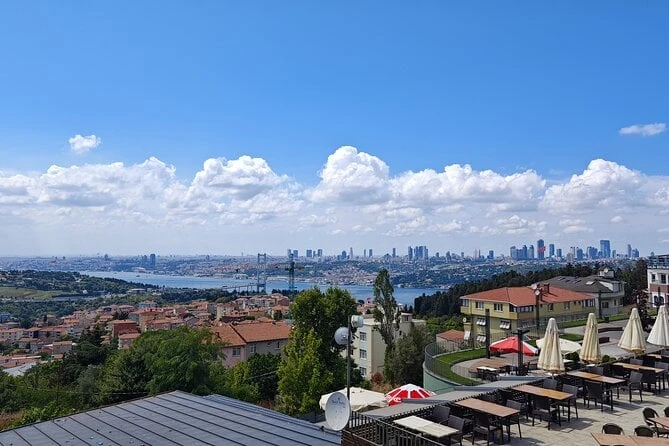The Hagia Sophia (Sultan Ahmed Mosque) in Istanbul ranks among the most beautiful religious buildings in the world. It was built between 1609 and 1616 during the reign of Sultan Ahmed I and earned the name by virtue of the beautiful blue tiles that decorate its interior. The Blue Mosque is just a continuation of typical Ottoman mosque architecture of the times and reminds of Byzantine influences: central dome, great sweeping minarets, and ample courtyard. In fact, it is an active mosque and one of the major cultural and religious sites of Istanbul. In fact, it is an active mosque and one of the most important sites of culture and religion for Istanbul. Its grand architecture, the extensive tilework that fills every single inch, and a sense of peace that arises from its overall ambiance make it a must-see site for every heart/party trekking in the city. A Turkey package tour is arguably one of the best ways to see this wonder of a landmark, covering both its architectural marvels and historical significance in depth.
The Location of Blue Mosque:
This is the Blue Mosque (or Sultan Ahmed mosque), located in the heart of Istanbul, Turkey, in its historic district known as Sultanahmet. It is positioned on the European side of the city and near its other important sites, including Hagia Sophia, Topkapi Palace, and the Basilica Cistern. The mosque lies in Sultanahmet Square to reach these historical areas with great facilities for visitors. With such a central location, it stands out in quite an impressive skyline in Istanbul and should not be missed while touring the city.
The History of Blue Mosque
Sultan Ahmed Mosque, or Blue Mosque, was erected during the years 1609 to 1616 in Istanbul on the reign of Sultan Ahmed I. The architect was Sedefkâr Mehmed Ağa, and this congregation was built as a part of the competition of the greatness with that of the size and grandeur with which it has been composed and into rivalry with the Holy Hagia Sophia itself: the power symbol of an empire. This mosque is the one most famous for its lovely blue İznik tiles adorning its interior, handpainted with flowers and intricate geometric patterns. With a huge central dome, four minarets, and a spacious courtyard, Blue Mosque exhibits a symphony of Islamic, Byzantine, and Ottoman architectural styles. It is also currently an active worship site and one of the most famous in Istanbul.
The Top Attraction in Blue Mosque:
1. The Blue Tiles
These blue-tiled surfaces have made the innermost sanctum of the mosque popular. The blue tiles, which are extensively painted with nativity in colours such as blue, green, and white, give the name by which people popularly know and formulate a serene and wonderful atmosphere, as one would expect from a mosque.
2. The Grand Dome
As far as the prayer hall is concerned, the main dome, which is placed above it, makes an impressive and splendid spectacle. An imposing, very open interior is thus created—a spaciousness that feels grander and more tranquil.
3. The Minarets
Unique to any mosque in Istanbul, the Blue Houses have six minarets. Accordingly, these are the magnificent minarets of the mosque, which, against the total promise of the Istanbul-picturesque skyline, hold their height.
4. The Prayer Hall
The site of the mosque that is just dawn light is holy and sacred by virtue of the constant sound of prayer from the continued whisper of hundreds of thousands of worshippers. Prayer hall, decorated with rows of prayer rugs and a very beautiful mihrab (niche designating the direction of Mecca), where prayers are performed in congregations at different times.
5. The Courtyard
The open space is one of the bigger courtyards found at any mosque in the world. The yard is surrounded by a portico, which runs along the perimeter supported by 28 columns. The courtyard is a peaceful space from which the grandeur of the mosque can be gandered and also provides opportunities for visitors to sit with their backs in reflection at the surroundings.
6. The Sultan's Lodge (Sultanın Mahfili)
This is an elevated platform on which the sultan and his family would sit while praying. It is adorned with beautiful tiles and located above, just above the prayer hall.
7. The Calligraphy
Islamic calligraphy, which is done inside the mosque, is another popular attraction. Beautiful verses from the Quran are inscribed along the mosque. It gives a spirit to the architectural design of the mosque with an artistic feeling.
8. The Fountain
The fountain is within the mosque's courtyard, where ablutions are conducted before prayer. The fountain is elegantly designed and traditionally made; it adds to the peaceful atmosphere of the mosque.
9. Sultan Ahmed Tomb
Next to this mosque stands the tomb of Sultan Ahmed I, the sultan for whom the mosque was built. The tomb serves as a historical site wherein the remains of the sultan are honored, thus being an important part of the Blue Mosque complex.
The Blue Mosque (Sultan Ahmed Mosque) is an etched architectural jewel in the history of Ottoman magnificence and Islamic artistry. The mosque's beautiful blue tiles, great dome, towering minarets, and near silent courtyard exhibit visitors a special experience of Istanbul's rich cultural and religious heritage. This is the place where one comes for worship, architectural grandeur, and historical significance. Just as well, the mosque stands as one of Istanbul's most famous places, attracting any tourist visiting the city. One such visit will remember an experience that harmonizes the most wonderful past and present.A Turkey day tour would serve as the perfect opportunity for the exploration of this iconic site, leaving visitors with memories of an experience that harmoniously fits the most wonderful past and present.








-webp.webp)


